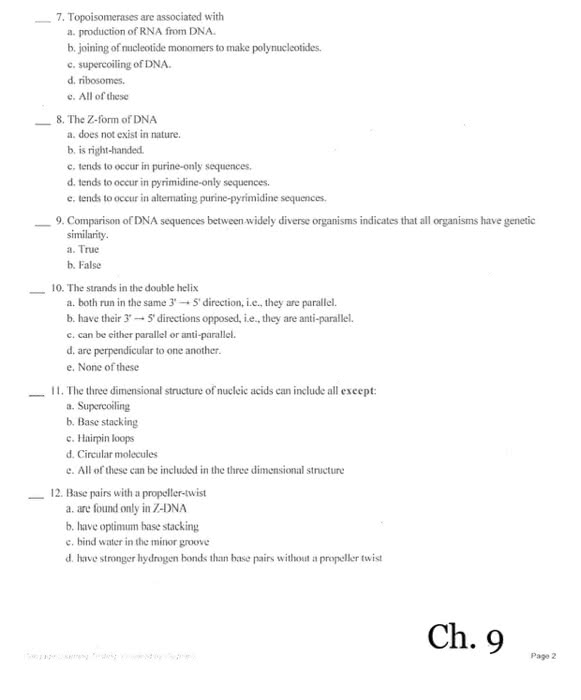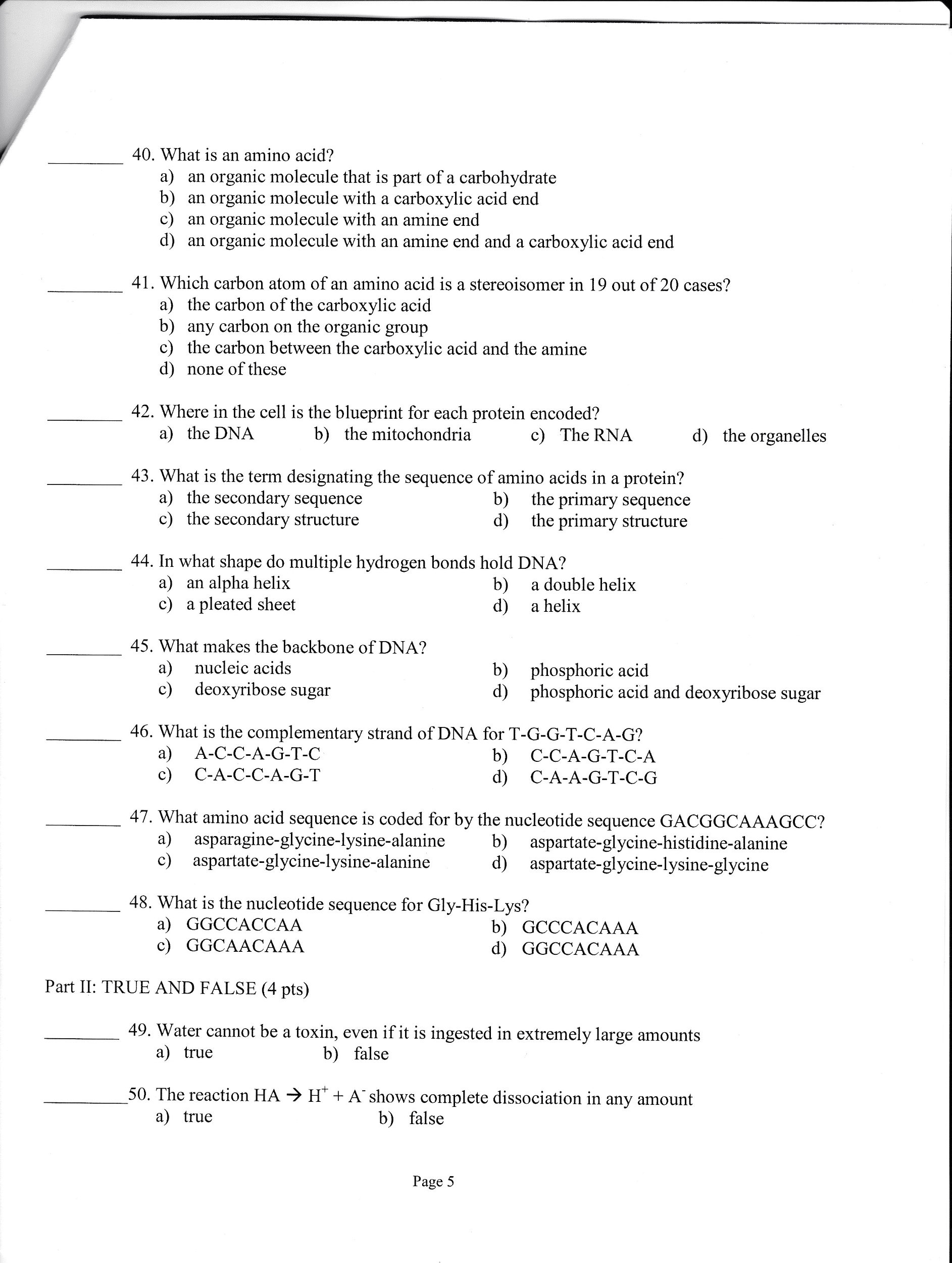L07 Chem 481 Lecture Notes - Lecture 3: Cell Nucleus, Glycosyl, Methylation

2 September 2016
Lecture 3: Nucleic Acids 2
I. Nucleic Acid Structure
A. DNA Helices (all antiparallel and double stranded)
1. B-DNA: The canonical antiparallel double helix, dominant in physiological DNA
a. A right handed helix that has an antiparallel phosphobase backbone
b. Contains wide and deep major and narrow and deep minor grooves along the helix
c. 3 H-bonds between G-C, 2 H-bonds between A-T
d. On the edges, the top part of each base ends up in the major groove in the B helix, the
bottom of the base pair ends up in the minor groove
e. Base presentation is important for recognition at the major groove
• The methyl (on T) or exocyclics are positioned in the major groove in B-DNA
• Major groove allows proteins and other nucleic acids to recognize DNA
f. Major/minor doesn’t always mean bigger/smaller, will depend on the edge of the bases
(edges in major groove, towards backbone in minor)
g. Use B-DNA as reference point for other structures
2. A-DNA
a. Right handed helix with the major groove as the helical axis
b. Narrow and very deep major groove, broad and shallow minor groove
c. The edge of the base (side away from sugar attachment) is in the major groove, but very
deep grooves, so it is not easily read (not great for biological info) because of depth
• Not much can interact other than H2O molecules or ions
3. Z-DNA (“zig-zag”)
a. Left handed helix with the minor groove as the helical axis
b. Major groove is a surface more than a depression
4. Comparing the Major forms of the DNA double helix:
A-DNA
B-DNA
Z-DNA
Helix Sense
Right Handed
Right Handed
Left Handed
Helix Axis Location
Major Groove
Through base pairs
Minor Groove
Base Pairs/Turn
11
10
12
Helix Diameter (Å)
23
20
18
Vertical Rise per bp (Å)
2.3
3.4
3.7
Sugar Ring
Conformation
C3`-endo
C2`-endo
C2` endo at C, C3` endo at G
Glycosyl Bond
Conformation
Anti
Anti
Anti at C, Syn at G
Major Groove
Narrow, very deep
Wide, deep
Flattened on Surface
Minor Groove
Broad, shallow
Narrow, deep
Narrow, very deep
find more resources at oneclass.com
find more resources at oneclass.com

5. Hydration of the Grooves of DNA Double Helix
a. Water clusters in the d(CGCGAATTCGCG)2
b. Water is presented as oxygen atoms (see previous page bottom right depiction)
c. Water H-bonds to parts of the DNA helix (donor and acceptor sites in the helix such as
on backbone and with bases) and forms a spine of H2O in the DNA helix
• This is dynamic and water exchanges rapidly in bulk water (physiological conditions)
d. Water and ions are necessary to neutralize or screen the negative charges on phosphates
• This is integral for maintaining the structural conformation of DNA in aqueous
conditions
B. Nucleic Acid Properties and Structure
1. dsDNA can be denatured (melted) and renatured (annealed)
a. When DNA is heated, its UV absorbance increases by 30-40%
• This property can be used to monitor the stability and randomization of DNA in the
melting process
b. The midpoint of the melting curve is defined as the melting point temperature
c. This property = hyperchromicity (the effects on annealing of DNA), reflects the
unwinding and unstacking of the DNA double helix
• Stacked bp’s in native DNA absorb less UV
• As temperature is lowered, absorbance drops, reflecting the reestablished base
stacking
d. Looking at the above sample curve (left)
• Heat denaturation (melting or strand separation) of DNA from various sources, gives
metlting curves
• The percentages show the percent composition of GC bases within the DNA
• GC bases are more favorable with consecutive stacking because it results in higher
stability of the DNA
• GC has 3 H-bonds vs. 2 H-bonds for AT, however the bases will H-bond with water,
so H-bonding is only a minor contributor to DNA stability, look at stacking
interactions
e. Middle picture shows the fast renaturation process from a bubble, but slow renaturation
from random association (melting and annealing are reversible processes)
f. Right diagram shows the local melting of a bubble of DNA
• Very important for replication and transcription, not done by changing temp but by
other cellular machinery
2. Symmetry Elements in Double Stranded Nucleic Acids
find more resources at oneclass.com
find more resources at oneclass.com



